Phone camera photography - Its role for a serious photographer (2024)
08th July 2024
Two events caused me to start using a smartphone camera. The first was an RPS Digital Imaging Group webinar held during the lockdown of the nation during the Covid pandemic. The speaker demonstrated its comprehensive specification and its superior automation, combined with inbuilt processing. He presented a very convincing case for it to have a place in any serious photographer’s kitbag. The second event was the realisation that not even the gift of a Leica camera could ignite the interest of an adult grandchild in conventional digital photography. So, the decision was made to dip my toes into the world by buying a modest, but capable, smartphone camera. At least I could begin to understand the inscrutable lure of the ubiquitous phone camera. At the same time, I could evaluate a phone camera's role in my more serious photography.
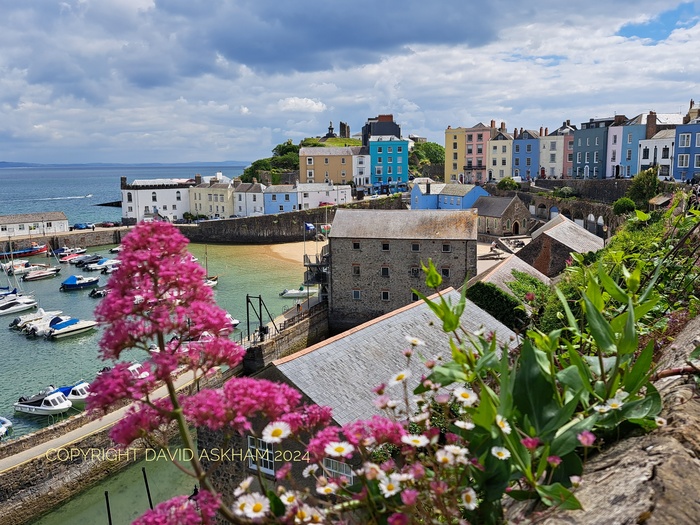
There is a bewildering choice of brands and models available. But I was impressed with the results obtained by a friend's Android Samsung Galaxy smartphone, I chose a new midrange model, a Galaxy A53 with a maximum resolution of 60 mp available for the main standard lens, with an equivalent focal length of 26 mm. That is wider than I would normally use, even wider than my Leica Q. However, the high resolution permits a fair amount of creative cropping. (Cropping is a valuable tool for removing intrusive material, or more, with beneficial results) .
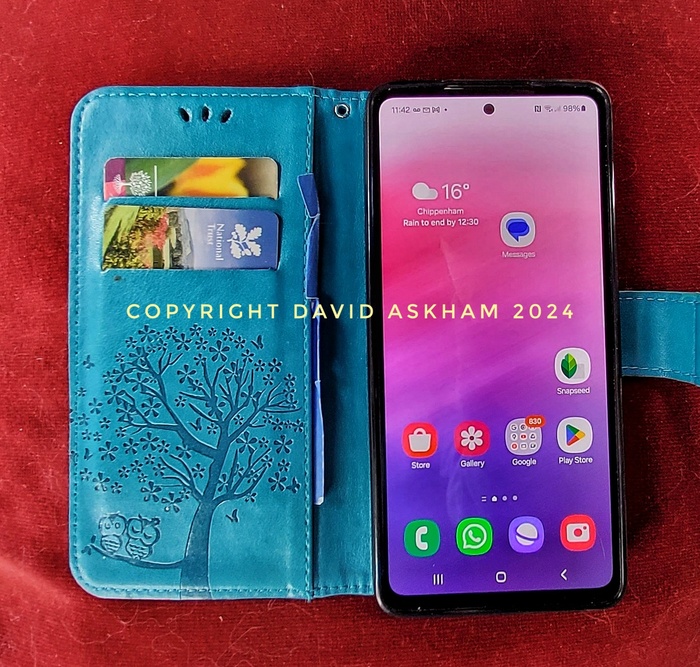
A separate lens provides super-wideangle coverage which is ideal for indoors and confined spaces. For selfies there is a dedicated 10 mp camera. Finally, there is a token 2x telephoto lens, albeit with reduced sensitivity. My approach is to maximise the use of the standard lens, with less use made of alternative angles of view.
Always available
Compared with a serious digital photographer’s kitbag of equipment, often weighing up to a kilogram or more, the slimline phone camera is truly pocketable and always available. Furthermore, although an accomplished digital photographer might be tempted to carry out an appropriate degree of post-processing, most users are far less ambitious and are prepared to share their straight-from-camera pictures with family, friends and favourite forums far more quickly than can a digital photographer. But often time is not critically in short supply.
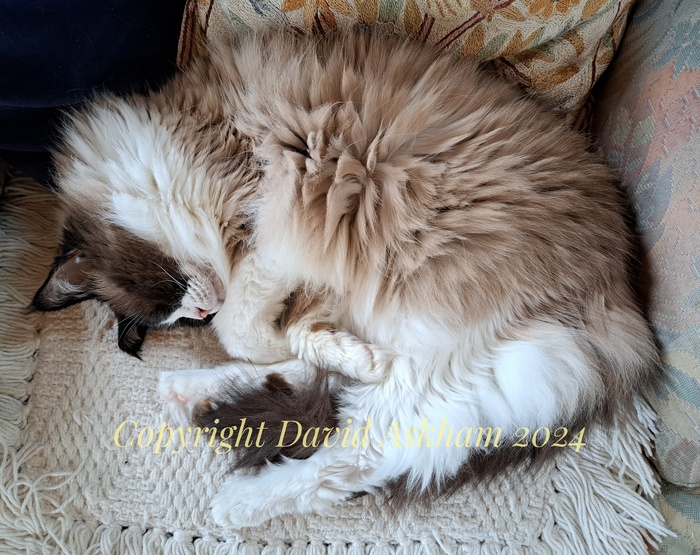
My main uses for my phone camera are for impromptu family pictures and pets, or as a visual notebook. The latter often feeds into more serious compositions with a conventional digital camera and a carefully selected lens. I have noticed this practice among professionals when watching their video logs of practical photography in the field. A phone camera is used to record a scene or location for future planning when lighting or weather conditions are likely to be better.
It is a timeless cliche that the best camera is the one you have with you in daily life situations. It is undeniable: your phone camera is more likely to be with you because of its multiple purposes. Camera manufacturers have recognised this trend; thus the decline in the development and production of the one-time popular compact range of cameras.
Realising its potential
For a long time I resisted using a smartphone as a camera essentially because of its poor ergonomics for photography. Despite trying, I am still uncomfortable with its physical operation. My Galaxy smartphone lives in a trim wallet-style case for protection and dust reduction. That is my choice. Whereas most users keep their smartphones naked in their pockets. Hence, advice is aimed at that kind of user. I have studied professional guidance on this matter, and it assumes the phone camera is unprotected. Even so, a thin rectangular object is a poor substitute for a real camera. Accordingly, I am still perfecting my method of shooting with my phone camera. It calls for a degree of improvisation and multiple shots, aggravating the editing phase when considering deleting near misses.
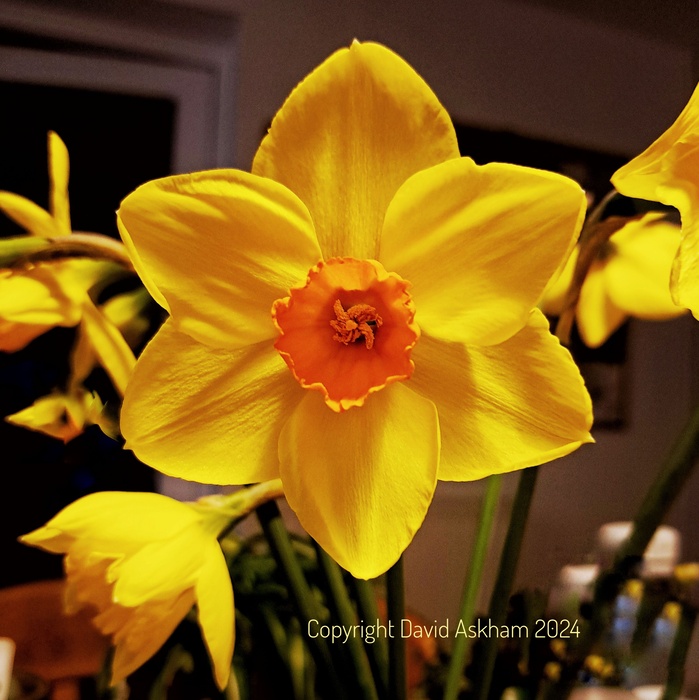
For table-top or product photography I bought an adapter to allow the use of a small table tripod. Combined with a delayed action setting, you open up a full range of operational possibilities.
Another option is to consider adding supplementary optical attachments. A friend, who is ķeen on photographing celestial skies at night, and in particular the moon, bought a small astro-telescope attachment and produces excellent results. It would be possible to photograph animals in the wild and details in the landscape. However these attachments are unlikely to appeal to me.
Photographic results straight out of phone cameras satisfy most users. It is quite remarkable the high stardards of inbuilt processing power. No doubt it doesn't occur to them that modest processing might lift their adequate results up to a new level of excellence. Even simple cropping can often remove distractions or improve composition. But stepping into the unknown deters most people. That is where a good handbook on smartphone photography can help you maximise the benefits. There are several on the market. I chose 'Learning made easy Android Smartphone Photography' by Mark Hemmings. It has proved to be very useful and concentrates on the Android system's organic capabilites.which are extensive. I find such help extremely useful and saves much time learning by trial and error. I believe there is a companion volume for the IOS users. (I bought my copy of the book and have no financial ties with the publisher)
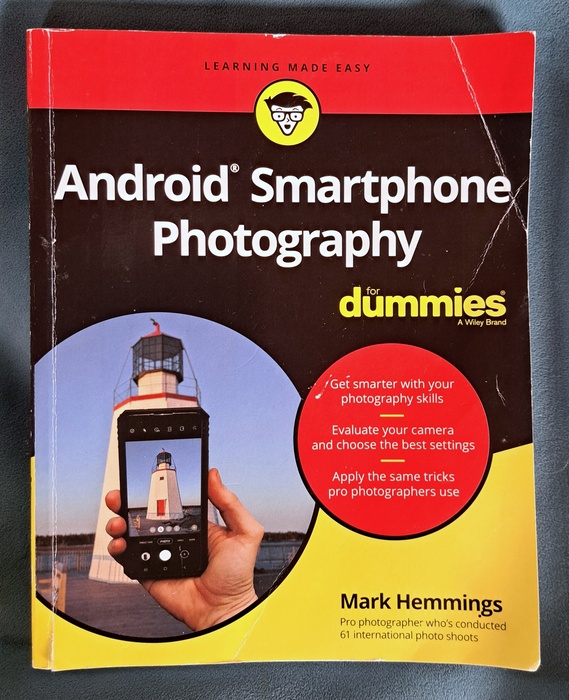
Processing options
I believe all phone cameras are supplied with Apps available for post-processing images. On Android models you will find Google Photos. It provides basic tools which enable cropping, perspective adjustments, global changes to white balance, exposure, contrast and a range of treatment presets. Quite a range of corrections or transformations are possible. From my observations few phone 'snappers' (and I do not use that word in a derogatory sense), use them without realising what they are missing. I have started to encourage younger members of my family to explore the possibilities. After initial interest, I have yet to see much enthusiasm, nor have I received any questions. Time will tell.
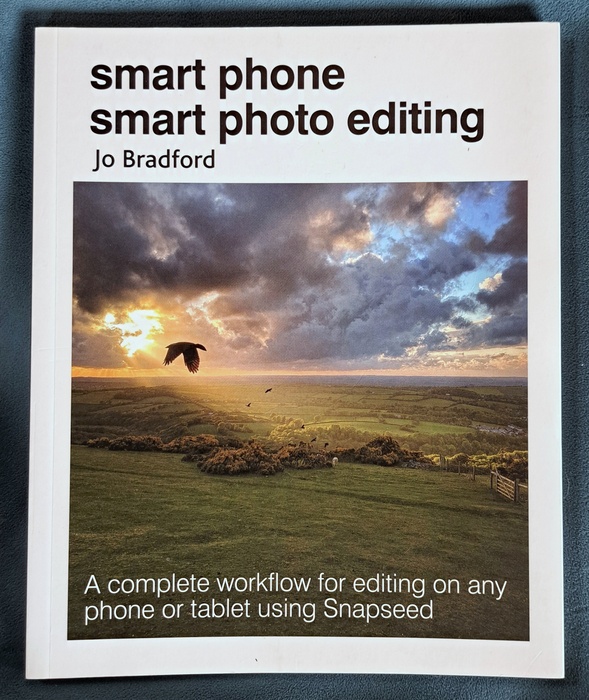
For many years, I have developed my processing skills using Lightroom on a desktop PC. So I found the basic processing software rather fiddly on a very small screen. However, I soon discovered Google Snapseed, a powerful and versatile set of tools capable of fingertip control on a smartphone or tablet. (The image above is of a book I bought, written by Jo Bradford. I can highly recommend it, although be warned. You will need to dip into it a few times before you obtain the necessary skills).
Snapseed calls for a different mindset, moving from a 'mouse' to a fingertip, which I find a lot easier on a tablet than on a smartphone. So, I transfer images needing selective adjustments to my Galaxy tablet for processing. It is much easier on a larger screen, particularly for elderly eyes, and images look so much more impressive when viewed on a tablet. But before you get carried away with processing, what if you need to revisit a phone camera image taken several months or even years ago? I find it amazing that a significant number of photoraphers have no system of digital asset management, or DAM for short.
There is a very simple form of DAM available for users of smartphone cameras, but it does call for user input. It relies on photographers identifying their best pictures and allocating a star to signify they are favourites. Favourites are held in an 'album'. For this website article, I delved into my favourites album, selected potential pictures and placed them in a newly-created album which I named - 'My Web Feature'. It is important to understand that this action does not create additional memory-hungry images. When you have completed a project, the album can be deleted, leaving the source images intact.
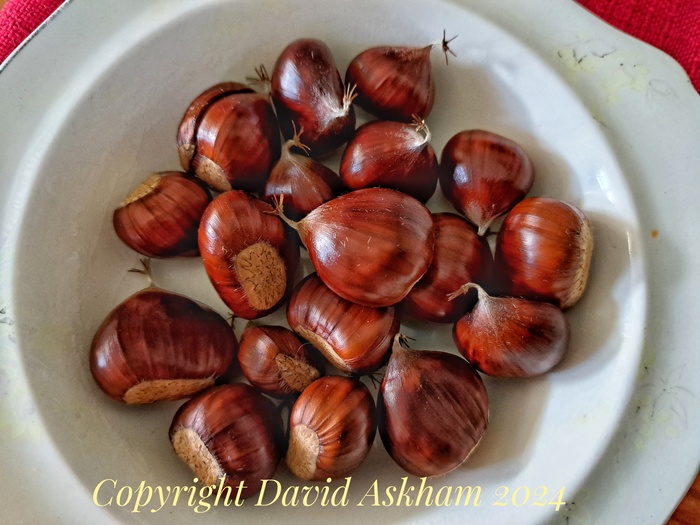
Reflecting on the terminology of smartphone DAM, albums are very similar to 'collections' in Lightroom, although they are a very simplified version. Whatever your photographic interests, steam engines, horses, temples, or food, your pictures can be allocated to a specific album. If your ambitions cover a more complex range of subjects, you need a more ambitious and appropriate DAM system. They exist. Meanwhile, learn how to use albums to manage your growing collection of smartphone images.
Conclusions
The smartphone is primarily a communications tool. I buck the trend by regarding it as my constant camera, accompanying me daily. It is instantly available for note taking, recording inaccessible electricity meters, and producing trial pictures which might well be executed on my traditional photographic kit, later. It will definitely not replace my conventional photographic kit.
A major benefit has been my introduction to WhatsApp, linking together dispersed members of the family. It has largely replaced emails and the telephone, and allows participating members to choose their own times of contributing or response.
It is also useful for producing 'product 'images for use on my website and for illustrating my original articles. It is versatile and can adapt easily to any available light indoors. But that is not all. I still have much to learn and new techniques to try. We live in exciting, if uncertain, times.
(All pictures illustrating this article were taken with my Galaxy A536B smartphone, except for that picture which was captured on my Galaxy Tab S7).
If any reader has helpful tips on post-processing and DAM and is willing to share, please comment, and I will consider adding it to this feature. We can all help each other in this way. Thank you.

(Tenby, Pembrokeshire)
There is a bewildering choice of brands and models available. But I was impressed with the results obtained by a friend's Android Samsung Galaxy smartphone, I chose a new midrange model, a Galaxy A53 with a maximum resolution of 60 mp available for the main standard lens, with an equivalent focal length of 26 mm. That is wider than I would normally use, even wider than my Leica Q. However, the high resolution permits a fair amount of creative cropping. (Cropping is a valuable tool for removing intrusive material, or more, with beneficial results) .

(Samsung Galaxy A53 in its protective case)
A separate lens provides super-wideangle coverage which is ideal for indoors and confined spaces. For selfies there is a dedicated 10 mp camera. Finally, there is a token 2x telephoto lens, albeit with reduced sensitivity. My approach is to maximise the use of the standard lens, with less use made of alternative angles of view.
Always available
Compared with a serious digital photographer’s kitbag of equipment, often weighing up to a kilogram or more, the slimline phone camera is truly pocketable and always available. Furthermore, although an accomplished digital photographer might be tempted to carry out an appropriate degree of post-processing, most users are far less ambitious and are prepared to share their straight-from-camera pictures with family, friends and favourite forums far more quickly than can a digital photographer. But often time is not critically in short supply.

A 'reserved' seat
My main uses for my phone camera are for impromptu family pictures and pets, or as a visual notebook. The latter often feeds into more serious compositions with a conventional digital camera and a carefully selected lens. I have noticed this practice among professionals when watching their video logs of practical photography in the field. A phone camera is used to record a scene or location for future planning when lighting or weather conditions are likely to be better.
It is a timeless cliche that the best camera is the one you have with you in daily life situations. It is undeniable: your phone camera is more likely to be with you because of its multiple purposes. Camera manufacturers have recognised this trend; thus the decline in the development and production of the one-time popular compact range of cameras.
Realising its potential
For a long time I resisted using a smartphone as a camera essentially because of its poor ergonomics for photography. Despite trying, I am still uncomfortable with its physical operation. My Galaxy smartphone lives in a trim wallet-style case for protection and dust reduction. That is my choice. Whereas most users keep their smartphones naked in their pockets. Hence, advice is aimed at that kind of user. I have studied professional guidance on this matter, and it assumes the phone camera is unprotected. Even so, a thin rectangular object is a poor substitute for a real camera. Accordingly, I am still perfecting my method of shooting with my phone camera. It calls for a degree of improvisation and multiple shots, aggravating the editing phase when considering deleting near misses.

'Seasonal splendour'
For table-top or product photography I bought an adapter to allow the use of a small table tripod. Combined with a delayed action setting, you open up a full range of operational possibilities.
Another option is to consider adding supplementary optical attachments. A friend, who is ķeen on photographing celestial skies at night, and in particular the moon, bought a small astro-telescope attachment and produces excellent results. It would be possible to photograph animals in the wild and details in the landscape. However these attachments are unlikely to appeal to me.
Photographic results straight out of phone cameras satisfy most users. It is quite remarkable the high stardards of inbuilt processing power. No doubt it doesn't occur to them that modest processing might lift their adequate results up to a new level of excellence. Even simple cropping can often remove distractions or improve composition. But stepping into the unknown deters most people. That is where a good handbook on smartphone photography can help you maximise the benefits. There are several on the market. I chose 'Learning made easy Android Smartphone Photography' by Mark Hemmings. It has proved to be very useful and concentrates on the Android system's organic capabilites.which are extensive. I find such help extremely useful and saves much time learning by trial and error. I believe there is a companion volume for the IOS users. (I bought my copy of the book and have no financial ties with the publisher)

Processing options
I believe all phone cameras are supplied with Apps available for post-processing images. On Android models you will find Google Photos. It provides basic tools which enable cropping, perspective adjustments, global changes to white balance, exposure, contrast and a range of treatment presets. Quite a range of corrections or transformations are possible. From my observations few phone 'snappers' (and I do not use that word in a derogatory sense), use them without realising what they are missing. I have started to encourage younger members of my family to explore the possibilities. After initial interest, I have yet to see much enthusiasm, nor have I received any questions. Time will tell.

For many years, I have developed my processing skills using Lightroom on a desktop PC. So I found the basic processing software rather fiddly on a very small screen. However, I soon discovered Google Snapseed, a powerful and versatile set of tools capable of fingertip control on a smartphone or tablet. (The image above is of a book I bought, written by Jo Bradford. I can highly recommend it, although be warned. You will need to dip into it a few times before you obtain the necessary skills).
Snapseed calls for a different mindset, moving from a 'mouse' to a fingertip, which I find a lot easier on a tablet than on a smartphone. So, I transfer images needing selective adjustments to my Galaxy tablet for processing. It is much easier on a larger screen, particularly for elderly eyes, and images look so much more impressive when viewed on a tablet. But before you get carried away with processing, what if you need to revisit a phone camera image taken several months or even years ago? I find it amazing that a significant number of photoraphers have no system of digital asset management, or DAM for short.
There is a very simple form of DAM available for users of smartphone cameras, but it does call for user input. It relies on photographers identifying their best pictures and allocating a star to signify they are favourites. Favourites are held in an 'album'. For this website article, I delved into my favourites album, selected potential pictures and placed them in a newly-created album which I named - 'My Web Feature'. It is important to understand that this action does not create additional memory-hungry images. When you have completed a project, the album can be deleted, leaving the source images intact.

'Harvest time'
Reflecting on the terminology of smartphone DAM, albums are very similar to 'collections' in Lightroom, although they are a very simplified version. Whatever your photographic interests, steam engines, horses, temples, or food, your pictures can be allocated to a specific album. If your ambitions cover a more complex range of subjects, you need a more ambitious and appropriate DAM system. They exist. Meanwhile, learn how to use albums to manage your growing collection of smartphone images.
Conclusions
The smartphone is primarily a communications tool. I buck the trend by regarding it as my constant camera, accompanying me daily. It is instantly available for note taking, recording inaccessible electricity meters, and producing trial pictures which might well be executed on my traditional photographic kit, later. It will definitely not replace my conventional photographic kit.
A major benefit has been my introduction to WhatsApp, linking together dispersed members of the family. It has largely replaced emails and the telephone, and allows participating members to choose their own times of contributing or response.
It is also useful for producing 'product 'images for use on my website and for illustrating my original articles. It is versatile and can adapt easily to any available light indoors. But that is not all. I still have much to learn and new techniques to try. We live in exciting, if uncertain, times.
(All pictures illustrating this article were taken with my Galaxy A536B smartphone, except for that picture which was captured on my Galaxy Tab S7).
If any reader has helpful tips on post-processing and DAM and is willing to share, please comment, and I will consider adding it to this feature. We can all help each other in this way. Thank you.
*** END ***